On some days it’s especially fabulous to be an eco-scribe. I had one of those days on Wednesday, Oct. 25. As part of a group from the Society of Environmental Journalists, I got to tour Vermont’s very first cow-power operation, in which the non-dairy output of a herd of Holsteins is turned into cleanly generated electricity. It’s got the potential to help more of Vermont’s beleaguered dairy farmers stay in business, while cutting their operation costs over time and keeping the methane generated by decomposing cow poop out of our greenhousing atmosphere.
The tour took place at Blue Spruce Farm in Bridport, Vermont, owned by the same family for about three generations. We begin in the barn, a vast structure lit with natural light …

… and home to the farm’s many, many Holsteins:
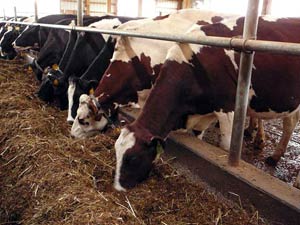
This scraper moves along the rubber-mat-covered floor of the barn, gathering up stinky cow manure. Note how clean the floor is after the scraper’s pass:
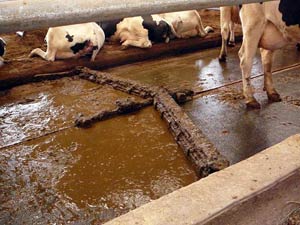
The manure drops into this drain, and flows into a long drainage system that stretches several hundred yards:
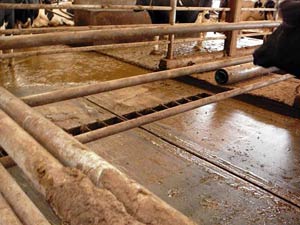
Then it’s down into this holding tank, where it sits for about 21 days, being digested by the same bacteria that one would find in a cow’s stomach:

After digestion, the manure has been rendered a virtually odorless mix of methane gas, solids, and liquid. They’re separated by this machine …
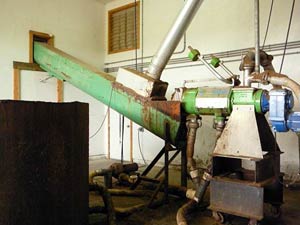
… the liquids going to a holding pond and eventually to fertilize the farm’s fields of hay and other cow forage, and the solids into these giant mounds of material with a consistency of barely damp sawdust. No, this did not stink!
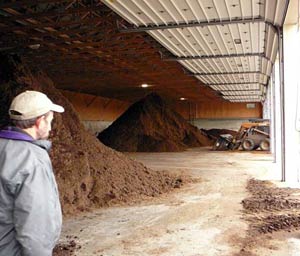
In the spirit of investigative journalism, I decided to get up close and personal:
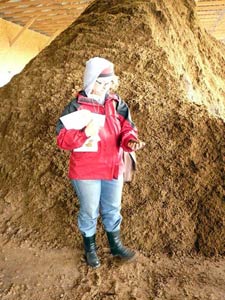
Not stinky or gross. In fact, the farm now uses this material instead of kiln-dried sawdust (which it used to import from Canada at significant cost) to bed the cows. This sort of bottom-line savings is helping to pay off the $1.2 million cow-power system in well less than a decade.
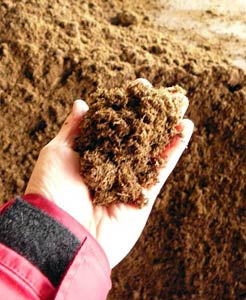
The methane is drawn out of the system to power this generator …
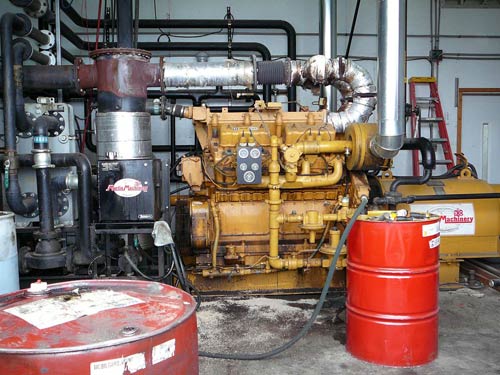
… and up wires to these transformers …
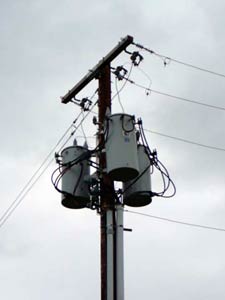
…and from there out into the grid:

Voi la: clean energy from cow poop. I was so excited after this tour; it was informative, experiential, full of promise for a reasonably environmentally sound future ripe with family farms and open agricultural landscapes — and of course, well-populated with photogenic cows.
Mea culpa in advance for any mistakes in the nuances of the operation above; I’m getting this up sans notes. Please do expand upon this, and/or correct me, in the comments.


